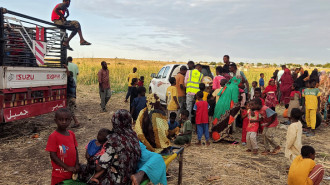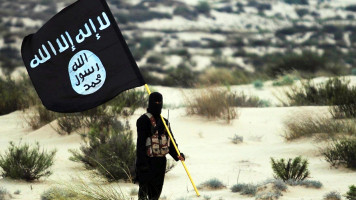Israel likely fired machine gun at reporters in Lebanon after strike killed Reuters' Issam Abdallah: TNO
A new report showed that Israeli forces likely fired .50 calibre machine guns at reporters in Lebanon after they struck them with tank shells, killing Reuters journalist Issam Abdallah and wounding several others, Reuters revealed on Thursday.
The report by the Netherlands Organisation for Applied Scientific Research (TNO) analysed shrapnel, the flak jackets of three journalists present, and audio and video evidence from the deadly 13 October attack.
The TNO report concluded that a tank in Israel fired two 120 mm tank rounds from a distance of 1.3 kilometres at reporters while they filmed clashes from the other side of the border, killing Abdallah and severely wounding Agence France-Presse (AFP) photographer Christina Assi.
The tank fired at the journalists twice, killing Abdallah immediately, waiting thirty-seven seconds, and then targeting a car used by Al Jazeera.
For the first time, the TNO report revealed that reporters came under fire by .50 calibre machine guns, which can be used by Browning machine guns mounted on Israeli Merkava tanks.
"It is considered a likely scenario that a Merkava tank, after firing two tank rounds, also used its machine gun against the location of the journalists," the TNO report said. "However, the latter cannot be concluded with certainty as the parameter study does not allow an accurate distance estimation and the direction of fire cannot be established based on the audio from the video camera."
Previously, an investigation by Human Rights Watch (HRW) concluded that the strikes on journalists were an "apparently deliberate attack on civilians and thus a war crime."
The seven journalists were on a hillside overlooking the Israeli-Lebanese border, filming clashes, in clearly marked press vests for fifty-three minutes before they were targeted.
Hezbollah and Israel have been engaged in cross-border clashes since Hamas's 7 October surprise attack on the Gaza envelope.
The TNO report noted that drones flying overhead and a helicopter could be heard throughout the recordings filmed by journalists. HRW said that the possible use of near-infrared light could also indicate the Israelis' use of lasers for targeting purposes.
"Evidence indicates that the Israeli military knew or should have known that the group of people they were firing on were civilians," HRW said in its 7 December report.
The Israeli Defense Forces said that the attack on journalists was being investigated, but no results have yet been made public. A spokesperson for the Israeli military said, "We don't target journalists."
Israel has killed at least 112 Palestinian journalists since 7 October and three in Lebanon.
On Monday, 3 March, the Syndicate of Lebanese Press Editors announced they planned to join lawsuits at the International Criminal Court (ICC) for its "crimes."
No lawsuits have been launched against Israel at the ICC. However, South Africa has raised a case against it in the International Court of Justice, accusing it of committing genocide in Gaza.
The syndicate called for joining efforts to "condemn Israel for its atrocities against Palestinian journalists and media workers in Gaza and southern Lebanon."







 Follow the Middle East's top stories in English at The New Arab on Google News
Follow the Middle East's top stories in English at The New Arab on Google News


![Beirut stadium [Getty]](/sites/default/files/styles/image_330x185/public/1235817272.jpeg?h=a5f2f23a&itok=0UZr2fIL)